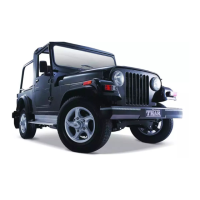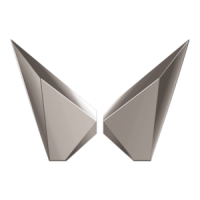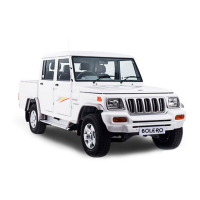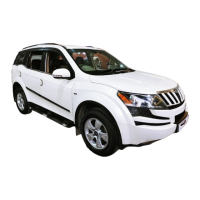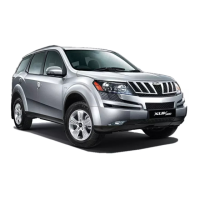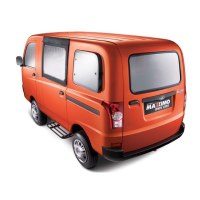© Copyright Mahindra & Mahindra Ltd. 042015
10-5
• Always perform a maintenance inspection after each day of off road driving that
has taken you through off terrain, sand, mud or water.
10.5.3 Driving Through Water
Although your vehicle is capable of driving through shallow water, there are a
number of precautions that must be considered before entering the water.
Never drive through water flowing above the bottom portion of the bumper /
engine bottom shield or above the tyre centre (wheel hub) line. Not following
this instruction will allow water to enter vehicle components causing internal
damage to the components, affecting driveability, safety, emissions and
reliability.
When driving through water, drive very slowly and at constant speed, less than
5 kmph. Water waves generated will be high and may enter air intake, causing
severe engine damage or cause a vehicle to get stalled.
You must slow down while driving through shallow water. Speeding may cause
water to splash onto the windshield, impairing your vision.
• The ground under the water might not be firm which could result the water being
deeper than expected when driving the vehicle through it.
• Do not stop or shut OFF the engine while immersed in water. It helps in preventing
water getting inside the exhaust pipes.
• When backing down a ramp, do not allow the exhaust tail pipe to immerse in
water.
• Water can wash the grease from wheel bearings, causing rusting and premature
failure. It may also enter the transmission and transfer case, reducing the oil's
lubricating qualities. If these are submerged in water, the lubricants should be
replaced as required.
• Water entering the transmission will cause deterioration in shift quality, locking
up of your transmission accompanied by vibration, and ultimately damaging the
transmission.
• Sand, mud/sludge that has accumulated in brake drums and around brake discs
may affect braking efficiency. This may also damage brake system components.
Wet brakes cannot stop the vehicle as effectively as dry brakes. Drying can be
improved by driving the vehicle slowly while applying light pressure on the brake
pedal.
• When driving through water, traction or brake capability may be limited.
Flowing Water
• If the water is swift flowing and rising (as in storm run-off) avoid crossing until the
water level recedes and/or the flow rate is reduced.
• The flowing water can erode the streambed causing your vehicle to sink into
deeper water.
• Determine the exit point (s) that are downstream of your entry point to
compensate for drifting.
Off-road/Water driving puts more stress on your vehicle than on-road driving.
Always perform a maintenance inspection after each day of off-road driving that has
taken you through rough terrain, sand, mud, or water.
STARTING AND DRIVING THE VEHICLE

